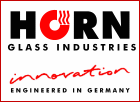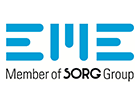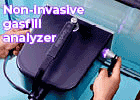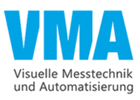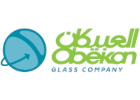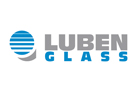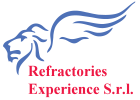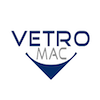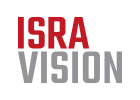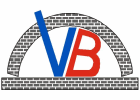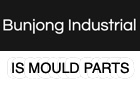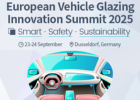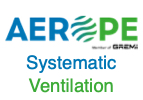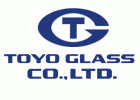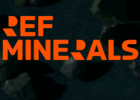The announced proposal for an Industrial Decarbonisation Accelerator Act (IDAA) aims at accelerating the decarbonisation of energy-intensive industries. It envisages creating lead markets for European- made low-carbon products and faster permitting procedures for industrial projects. In the recent years, all European-based flat glass manufacturers have successfully developed flat glass products with minimal embedded carbon. These products have the same aesthetics, quality and technical performance as traditional flat glass products. While they have been commercially available for a few years, their market share remains however limited.
The European flat glass sector shares the objective of boosting demand but also production for glass and glazing products primarily made in Europe with minimal environmental impacts. Based on the flat glass sector’s experience, Glass for Europe calls on the European Commission to carefully balance the extra administrative burden of introducing new labels and requirements with the marginal benefits expected from such measures.
The creation of a label for low-carbon products and other non-financial instruments will, at best, have a very marginal impact on the demand for and availability of European-made low-carbon flat glass products. Based on the flat glass sector’s experience in launching low-carbon products, demand for these products is hampered by a variety of factors among which price premium, misconceptions on the product, risk aversion slowing down adoption of new products in the construction industry. Labels and non-financial instruments will not address any of these hurdles. It must also be noted that regardless of demand signals, there are many structural challenges that limit the industry’s capacity to scale up the manufacturing of lower-carbon flat glass thus resulting in higher production costs. Labelling of low-carbon products will have no effect on these structural challenges, i.e. the difficult and costly access to hydrogen, renewable electricity, biofuels and recycled glass (cullet) which is an essential input material to produce glass with lower embedded carbon.
A vast array of sustainability data already exists and other EU policy instruments under development will promote low-carbon glazing in the building sector more efficiently. Nearly all flat glass products destined for the building sector, i.e. 80% of the output, is placed on the market with Environmental Performance Declarations (EPDs) based on EN standards. These EPDs will become mandatory with the implementation of the new Construction Products Regulation, and they will be required for the calculation of building’s whole life-cycle impact foreseen with the new Energy Performance of Buildings Directive. These two regulatory instruments are expected to drive demand for low-carbon glazing products hence the limited need for additional labelling.
In the other sectors supplied by the flat glass industry, i.e. automotive, solar, appliances, etc. flat glass is a business-to-business material, which is incorporated into a much broader final product. Neither the carbon content nor the European origin of the glass component will have big impact on the carbon content or European assembly of the final product, nor it is likely to be a driver of customer choice.
Any new labelling of products must not create additional administrative complexities when simplification and cutting red tape is a policy priority of the European Commission. Should a label be anyhow developed on flat glass products, it is essential that the definition of low- carbon and subsequent requirements are based on existing performance-based methodologies for the product concerned. This entails that no new methodology should be developed. It also means that a label cannot be based on the EU Emissions Trading System’s CO2 benchmarks, which is an indicator of emissions by industrial installations regardless of the final product manufactured and its embedded carbon. In the building segment where the full life-cycle impact of product is a more relevant scope than the sole embedded carbon value, the use of EPDs would be the most relevant approach. See page 3 for recommendations.
An instrument to identify the European origin of materials and goods could be beneficial and serve in procurement criteria, if complexities of value-chains are apprehended. Defining whether flat glass and its downstream products are made in Europe could contribute to supporting European production, although marginally. The actual place where glass is melted could serve as a prime indicator. See page 3 for recommendations. It must be borne in mind however that flat glass manufacture is an industry structured at continental level yet it sometimes relies on plants outside Europe for specialised production. Manufacturers therefore source from multiple plants, including the United Kingdom and further away, depending on stock availability, logistics, and project timelines. Procurement criteria based on origin should not be overly rigid and in any case should not prevail over performance and sustainability.
While any simplification of permitting procedures is welcome, the greatest support to industrial decarbonisation in flat glass manufacturing will come from other policies. To accelerate the decarbonisation of the flat glass manufacturing industry, it is essential to tackle bottlenecks hindering high-performance manufacturing and to ensure the competitiveness of EU installations. It is in the following three policy areas that decisive actions are needed: first on circularity to enhance the availability of glass available for recycling, second, energy to ensure greater availability of low-carbon energy sources at a competitive price, and third, climate policy and the EU ETS to recreate a business case for sustainable flat glass manufacturing in Europe. Regarding permitting, the flat glass sector wishes to stress that most delays and extended processes are usually due to additional requirements demanded by the Member States, on top of EU obligations. Cutting these extra national and regional obligations would be beneficial.



